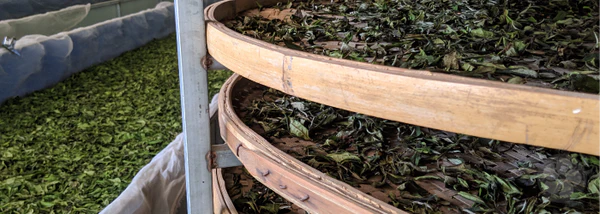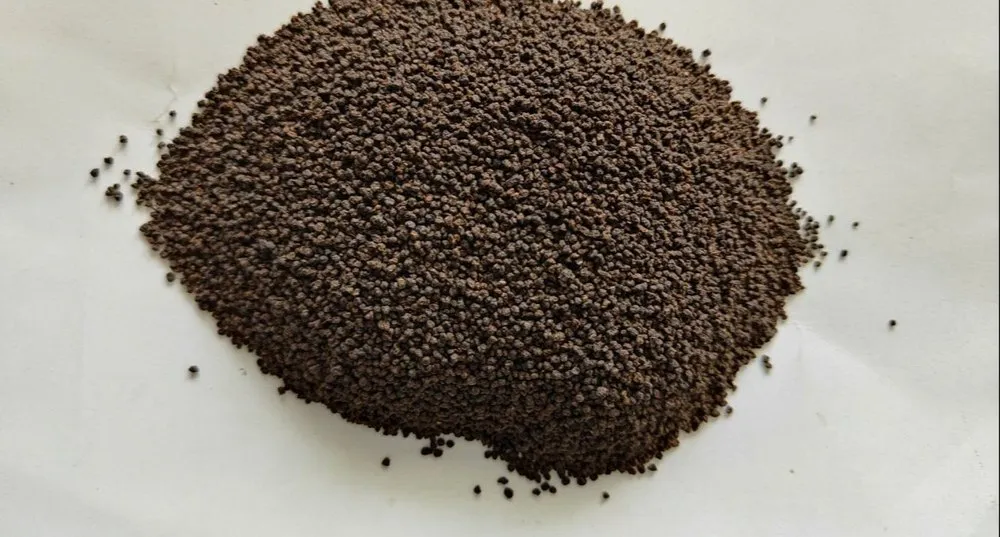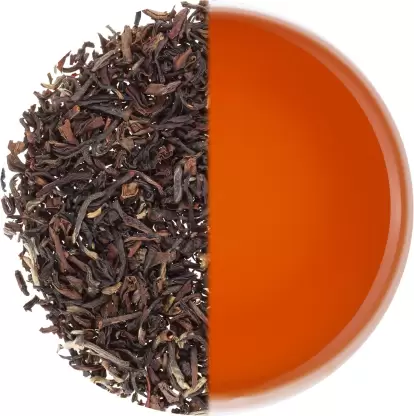Tea manufacturing in India typically involves plucking tea leaves, withering them to reduce moisture content, and rolling them to release the enzymes that oxidise them—finally, drying and sorting them to produce the final product. India is one of the largest tea producers in the world, with major tea-growing regions including Assam, Darjeeling, and Nilgiri.
India is one of the world's largest producers and exporters of tea. The tea manufacturing process in India is a complex process involving several steps. India's tea manufacturing process is highly sophisticated, from cultivating the tea plant to harvesting the leaves and from drying to grading and blending.
In this blog, we will learn about the crucial steps for manufacturing tea and different types of Indian teas.
Did you know?
The first tea plantation in India was established in Assam in 1837 by the British East India Company.

Overview of Tea Manufacturing in India
Tea manufacturing in India is a highly organised industry with many tea estates and manufacturing units nationwide. India is the world's second-largest producer and consumer of tea, with a substantial share of the international tea trade.
Tea production in India is centred on the northern and northeastern states of Assam, West Bengal, and Kerala. Assam is the largest tea producer in India, accounting for more than 55% of the country’s tea production. West Bengal and Kerala are the other major tea-producing states in India.
India's tea manufacturing process begins with tea bushes cultivation. Once harvested, tea leaves are processed conventionally or CTC (crush, tear, curl).
The orthodox method involves hand-rolling tea leaves to release flavour and aroma. The CTC method involves machines that crush, tear, and curl tea leaves.
After processing, tea is graded and sorted according to quality. The tea is then packaged and sold as loose-leaf tea or tea bags. India produces both black and green tea. Most tea made in India is sold domestically, while a small portion is exported to other countries.
Also Read: Read Some Motivational Quotes for the Customer Service Team
The Main 5 Steps of Tea Processing
The manufacturing of tea includes some crucial, so let’s discuss some of the tea processing steps.
1. Withering
The first step in the manufacturing process is withering, which involves spreading the leaves out in a cool and ventilated room. This process removes excess moisture from the leaves, making them pliable and easier to shape.

2. Rolling
After the leaves are withered, they are rolled by machines or by hand. Rolling breaks down the leaves' cell walls, releasing enzymes and promoting oxidation.

3. Oxidation
The next step is oxidation, also known as fermentation. The leaves are spread out on large tables and left to sit for a specific amount of time, ranging from a few hours to several days. This process changes the leaves' chemical composition and gives them their characteristic colour and flavour.

4. Firing
The final step in the manufacturing process is firing, which involves drying the leaves in large ovens or pans. This step is intended to stop oxidation and bring the leaves' moisture content down to 3%.

5. Grading and Sorting
After firing, the leaves are sorted and graded based on size, colour, and quality. Tea is then packaged and ready for distribution and consumption.
It is worth noting that the process differs for different tea types. Tea can be white, green, oolong, black, or post-fermented, requiring other processing methods.

Also Read: Tea Stall - How to Start a Low Budget Small Tea Shop in India | Khatabook
The Different Types of Indian Tea and Their Characteristics
India is one of the largest tea producers in the world and produces a wide variety of teas with different flavours and aromas. Some of the most popular types of Indian tea and their characteristics are:
1. Darjeeling Tea
This tea is grown in the Darjeeling district of West Bengal and is known for its delicate and complex flavour. It is often described as having a musky spiciness with a hint of astringency and a fruity aftertaste. It is considered one of the best teas in the world and is produced in limited quantities.

2. Assam Tea
This tea is grown in the Assam region of northeastern India and is known for its strong, malty flavour and full-bodied character. Assam tea is often used in blends to add depth and richness to other teas.

3. Nilgiri Tea
This tea is grown in the Nilgiri Hills of southern India and is known for its bright, fresh flavour and light body. The tea is green and used for blending with other teas for their aromatic and flavorful profile.

4. Dooars Tea
Grown in the terai region of West Bengal, Dooars tea is known for its robust and full-bodied flavour and malty aroma; it is often used in blends to add depth and richness to other teas.

5. Kangra Tea
Grown in Himachal Pradesh, it is known for its delicate, floral aroma and smooth, light flavour. It is primarily green tea and is popular in northern India.

6. Sikkim Tea
Grown in the Himalayas, Sikkim tea is known for its sweet and delicate flavour, with a light, smooth body. It is primarily green tea.

7. Chai Tea
Chai is a type of spiced tea popular in India. It is made by brewing black tea with a mixture of aromatic spices such as ginger, cardamom, cinnamon, and cloves.
It is imperative to note that these are just a few examples of the different types of Indian tea and their characteristics. Other varieties and blends are also produced and consumed in India.

Quality Control in Tea Production
1. HACCP (Hazard Analysis and Critical Control Points) System: This system is internationally recognised for ensuring food safety and quality. It involves identifying and controlling risks throughout the production process.
2. Good Agricultural Practices (GAP): These are guidelines for achieving good agricultural practices to ensure tea quality and safety. It includes clean water, appropriate fertilisers, proper handling and storage of tea leaves, and environmentally friendly pesticides.
3. Certification involves obtaining certificates from government bodies or third-party certification agencies to ensure products meet the desired quality standards.
4. Quality Assurance: This involves regularly monitoring tea leaves quality, assessing the overall production process, and ensuring that the final product meets the quality requirements.
5. Traceability: This involves tracking the entire tea production process so that quality-related issues can be identified and resolved quickly.
Benefits of Tea Manufacturing in India
- Boosts Economic Development: Tea manufacturing is an essential industry in India and contributes to economic development. It is one of the most important sources of foreign exchange earnings and provides employment opportunities for thousands of workers.
- Supports Sustainable Agriculture: Tea is a crop grown in many country areas and is a major income source for local farmers. Tea manufacturing promotes sustainable agriculture and preserves the environment.
- Produces High-Quality Tea: India's high-quality tea production standards ensure that the tea produced is of the highest quality. The manufacturing process includes strict quality control, which ensures superior tea production.
- Increases Export Opportunities: Tea manufacturing in India creates numerous export opportunities. This helps increase foreign exchange earnings by selling tea to other countries.
- Promotes Regional Development: Tea production in India is concentrated in certain areas, promoting regional development. Manufacturing directly contributes to the local economy by creating jobs and providing income for the local population.
Opportunities in the Indian Tea Manufacturing Industry
1. Increasing Demand for Organic Tea: With rising health consciousness and growing demand for organic products, the organic tea market in India is expected to grow significantly. Organic tea manufacturers can capitalise on this opportunity to increase market share.
2. Expansion of the Global Market: The Indian tea manufacturing industry has an opportunity to capitalise on the growing global demand for Indian tea. Companies can explore international markets, such as the US and Europe, to expand their customer base and build brand awareness.
3. Developing New Products: The industry can explore new product development opportunities, such as flavoured teas, herbal teas, and speciality teas. This could help them differentiate their products, attract new customers, and increase revenue.
4. Investing in Technology: The industry has an opportunity to invest in technology to improve efficiency and reduce costs. This could include the automation of production processes, the adoption of artificial intelligence, and the utilisation of big data.
5. Developing an Online Presence: With the rise of e-commerce, tea manufacturers can create an online presence to reach a broader customer base and promote their products. This could include having an online store, creating social media accounts, and engaging in online marketing activities.
Also Read: Coffee Shop Business in India: How to Start Small Coffee Shop Business
The Export Market for Indian Tea and Future Trends
The export market for Indian tea has consistently grown over the past decade. India is currently the second-largest tea exporter in the world, with China being the largest. Indian tea is exported to the United Arab Emirates, Russia, the United States, Pakistan, Iran, the United Kingdom, and Germany.
Other countries such as Canada, Japan, and Australia are significant export destinations for Indian tea. In recent years, the Indian tea industry has seen several changes and technological advancements.
These advancements have allowed for better quality tea production and more efficient production processes. Companies have also started to focus more on marketing and branding their tea products, which has increased their global reach.
Conclusion
In conclusion, India's tea manufacturing process is an age-old tradition that has been perfected over time. It is a highly labour-intensive process that requires careful tea leaf selection, processing, sorting, blending, and packing.
India's tea industry substantially contributes to the nation's economy, with millions of workers employed in tea gardens and factories. In recent years, Indian tea manufacturers have embraced new technology, such as automation and modern equipment, to streamline the production process further.
Follow Khatabook for the latest updates, news blogs, and articles related to micro, small and medium businesses (MSMEs), business tips, income tax, GST, salary, and accounting.
